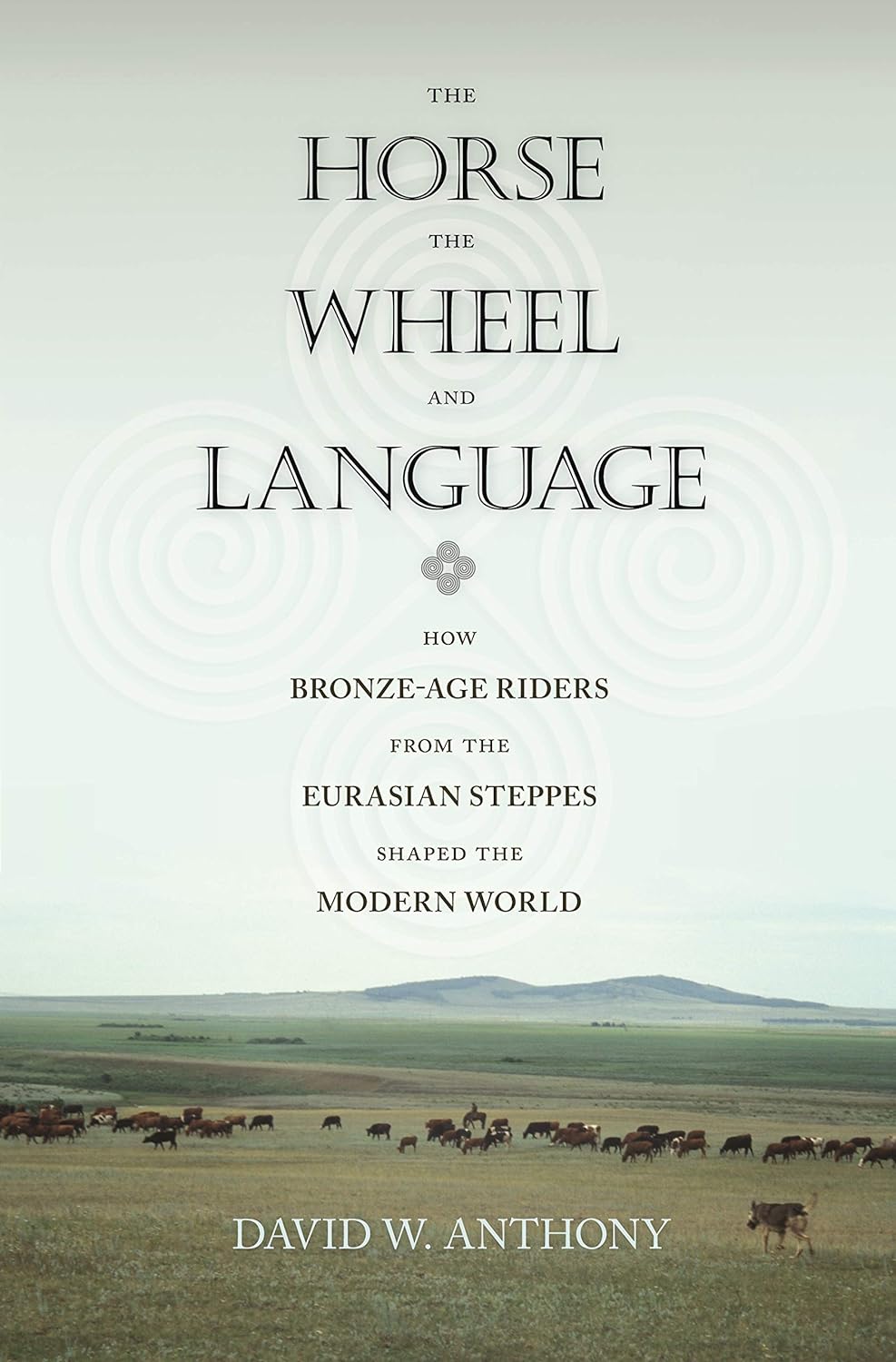About this deal
The obvious success of PIE-speaking cultures made their dialects prestigious and worth knowing, dominating and eventually driving non-PIE languages to extinction in most areas Indo-Europeans reached. In addition, PIE cultures appear to have been very inclusive, basing identification on language and ritual rather than race and ethnicity, which also helped facilitate their spread. This tradition was long lived: Rome's success two thousand years later owed much to her ability to accomodate foreign elites and co-opt them into the ruling hierarchy. The mission of The Horse, the Wheel, and Language is to put forth an argument for where and when this semi-hypothetical language developed and was used. Anthony believes it developed in the Eurasian steppes, in what is today Ukraine and southern Russia, about 4500 B.C.E. He charts the timeline for when all the daughter languages split apart from the mother tongue and moved across the globe due to migrations out of the steppes. Some of this is documented factually through archaeological finds (so much pottery) and some of it is so theoretical that I could hardly follow. At one point Anthony actually uses TWO reconstructed dead languages and their speculative lifetimes and geographical homelands to demonstrate grammatical and lexical borrowing into ANOTHER reconstructed, older dead language. It was like trying to think 15 moves ahead in Sudoku...at a certain point your brain just shuts down. At these parts in the book I was mentally just smiling and nodding my way through. Ever since a British linguist in colonial India discovered connections between Sanskrit and European languages, explanations have been put forth for these connections by the inquiring minds of the world. Some of these explanations were built around the existence of a prehistoric super-race who dominated the world from the Rhine to the Ganges, spreading their language everywhere they went. It speaks to the resilience of these ideas that David Anthony feels (probably correctly) that he must thoroughly expound upon his work as a matter of linguistics and archaeology, and that ethnicity is not a major concern of either discipline. The Horse, the Wheel, and Language solves a puzzle that has vexed scholars for two centuries, the source of the Indo-European languages, recovers a magnificent and influential civilization from the past. The Horse, the Wheel, and Language brings together the work of historical linguists and archaeologists, researchers who have traditionally been suspicious of each other's methods. Though parts of the book will be penetrable only by scholars, it lays out in intricate detail the complicated genealogy of history's most successful language." ---Christine Kenneally, International Herald Tribune
I'd like to start my review of the book with part of the last sentence of the last chapter of the book:"...in the invisible and fleeting sound of our speech we preserve for a future generation of linguists many details of our present world." (p.466) A thorough look at the cutting edge of anthropology, Anthony's book is a fascinating look into the origins of modern man."--Publishers Weekly
Change Website Language
The Horse, the Wheel, and Language solves a puzzle that has vexed scholars for two centuries—the source of the Indo-European languages and English—and recovers a magnificent and influential civilization from the past.
Post-Mariupol culture (early phase 3800–3300 BCE, late phase 3300–2800 BCE): [49] around the Dnieper Rapids, near the Donets River. [50] According to Ina Potekhina, the people looked most like the Suvorovo-Novodanilovka people. [47] When the climate changed between 3500 and 3000 BCE, with the steppes becoming drier and cooler, those inventions led to a new way of life in which mobile herders moved into the steppes, developing a new kind of social organisation with patron-client and host-guest relationships. That new social organisation, with its related Indo-European languages, spread throughout Europe, Central Asia and South Asia because of its ability to include new members within its social structures.
In its integration of language and archaeology, this book represents an outstanding synthesis of what today can be known with some certainty about the origin and early history of the Indo-European languages. In my view, it supersedes all previous attempts on the subject."—Kristian Kristiansen, Antiquity
Related:
 Great Deal
Great Deal 